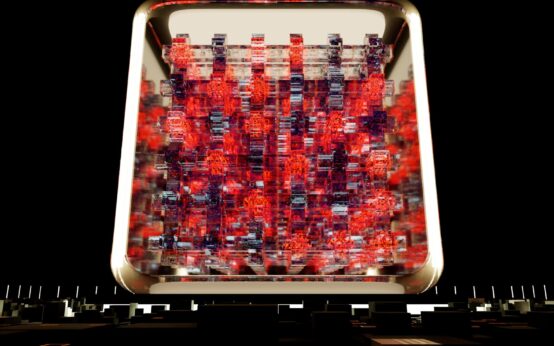The Role of Distributed Validator Technology (DVT) in Network Resilience
In today’s interconnected world, network resilience is paramount. Think about it – from financial transactions to critical infrastructure, our reliance on stable, secure networks is undeniable. But what happens when a single point of failure threatens to bring the whole system down? This is where Distributed Validator Technology (DVT) steps in, offering a robust solution for enhancing network reliability and security.
Understanding the Challenge: Single Points of Failure
Traditional network architectures often rely on centralized validators or single servers. While seemingly efficient, this centralized approach creates a vulnerability. If that single point fails, the entire network can be compromised. Imagine a bridge with only one supporting pillar – if that pillar collapses, the whole structure comes crashing down. This is the risk we face with centralized networks.
Enter DVT: A Decentralized Approach
DVT offers a paradigm shift by distributing the validation process across multiple nodes. Instead of relying on a single entity, the network’s security and integrity are upheld by a distributed network of validators. This decentralized approach eliminates the single point of failure, drastically improving network resilience.
How Does DVT Work?
DVT leverages a network of independent validators, each responsible for verifying transactions or performing other critical network functions. These validators work collaboratively, using consensus mechanisms to ensure agreement on the validity of data. Think of it like a jury – multiple individuals weigh the evidence and reach a collective verdict, making the outcome far more robust than a single judge’s decision.
Benefits of DVT for Network Resilience
- Enhanced Security: DVT makes it significantly harder for malicious actors to compromise the network. Attacking a distributed network requires far more resources than targeting a single point.
- Improved Fault Tolerance: Even if some validators fail, the network continues to operate seamlessly thanks to the distributed nature of the system.
- Increased Availability: With multiple validators working in parallel, the network remains available even during periods of high demand or maintenance.
DVT in Action: Real-World Applications
DVT is not just a theoretical concept; it’s already being implemented in various applications, particularly within the blockchain space.
Blockchain and Cryptocurrency
DVT plays a crucial role in securing blockchain networks like Ethereum 2.0. By distributing the validation process, DVT enhances the security and scalability of these decentralized platforms.
Cloud Computing
DVT can enhance the resilience of cloud services by distributing workloads across multiple servers. This ensures that services remain available even in the face of hardware failures or other disruptions.
IoT Networks
The increasing number of connected devices in IoT networks makes them vulnerable to attacks. DVT can strengthen the security and reliability of these networks by decentralizing control and validation.
The Future of DVT
As networks become increasingly complex and interconnected, the importance of resilience will only grow. DVT is poised to play a key role in shaping the future of network security and reliability. Its ability to mitigate single points of failure and enhance fault tolerance makes it a powerful tool for building more robust and dependable systems. What are your thoughts on the potential of DVT? How do you see it impacting different industries?
Deeper Dive into DVT Implementation
Implementing DVT requires careful consideration of several factors, including the consensus mechanism, the number of validators, and the network topology. The choice of consensus mechanism is particularly important, as it determines how validators reach agreement on the validity of transactions. Common consensus mechanisms include Proof-of-Stake (PoS) and Byzantine Fault Tolerance (BFT).
- Consensus Mechanisms: Choosing the right consensus mechanism is key. Proof-of-Stake and Byzantine Fault Tolerance are popular choices, each with its own strengths and weaknesses.
- Number of Validators: Finding the right balance between security and efficiency is important when determining the optimal number of validators.
- Network Topology: The way validators are connected impacts the network’s resilience and performance.

Overcoming Challenges in DVT Implementation
While DVT offers numerous advantages, there are also challenges to overcome. These include the complexity of managing a distributed network, the potential for communication overhead, and the need for robust security measures to protect against malicious validators. However, ongoing research and development are continuously addressing these challenges, paving the way for wider adoption of DVT.
The Role of Threshold Cryptography
Threshold cryptography plays a vital role in DVT by enabling secure, distributed key management. It allows a group of validators to collectively control a cryptographic key without any single validator having access to the entire key. This enhances security and prevents any single validator from compromising the network.
Conclusion: Embracing the Decentralized Future
Distributed Validator Technology represents a significant advancement in network resilience. By eliminating single points of failure and distributing trust across a network of validators, DVT offers a more secure, reliable, and scalable approach to network architecture. As we move towards a future increasingly reliant on interconnected systems, embracing DVT will be crucial for ensuring the stability and security of our digital world. From blockchain to cloud computing and beyond, DVT’s potential is vast, promising a future where networks are not only interconnected but also inherently resilient.



 Sentiment Analysis for Crypto: A Trader’s Ultimate Guide
Sentiment Analysis for Crypto: A Trader’s Ultimate Guide  NFTs: The New Key to Membership & Brand Loyalty | Guide
NFTs: The New Key to Membership & Brand Loyalty | Guide  Polkadot’s Parachain Architecture Explained Simply
Polkadot’s Parachain Architecture Explained Simply  Crypto Phishing: How to Protect Your Digital Assets
Crypto Phishing: How to Protect Your Digital Assets  Social Media on Blockchain: The Next Digital Frontier
Social Media on Blockchain: The Next Digital Frontier  What is a Flash Loan? A DeFi Deep Dive for Beginners
What is a Flash Loan? A DeFi Deep Dive for Beginners  Sentiment Analysis for Crypto: A Trader’s Ultimate Guide
Sentiment Analysis for Crypto: A Trader’s Ultimate Guide  NFTs: The New Key to Membership & Brand Loyalty | Guide
NFTs: The New Key to Membership & Brand Loyalty | Guide  Polkadot’s Parachain Architecture Explained Simply
Polkadot’s Parachain Architecture Explained Simply  Crypto Phishing: How to Protect Your Digital Assets
Crypto Phishing: How to Protect Your Digital Assets  Social Media on Blockchain: The Next Digital Frontier
Social Media on Blockchain: The Next Digital Frontier  What is a Flash Loan? A DeFi Deep Dive for Beginners
What is a Flash Loan? A DeFi Deep Dive for Beginners